Managers use project milestones as pit stops on their journey toward the project finish line. The entire team stops to check whether they’ve accomplished what they needed to up to that point and make up for what’s missing before moving on.
Milestones are an especially useful tool when the team is taking on a large and complex project. Getting off-track at any point can be costly and time-consuming, so it’s better to pause regularly and check if everything’s in order.
Discover what milestones look like and how to set your own when embarking on your next project.
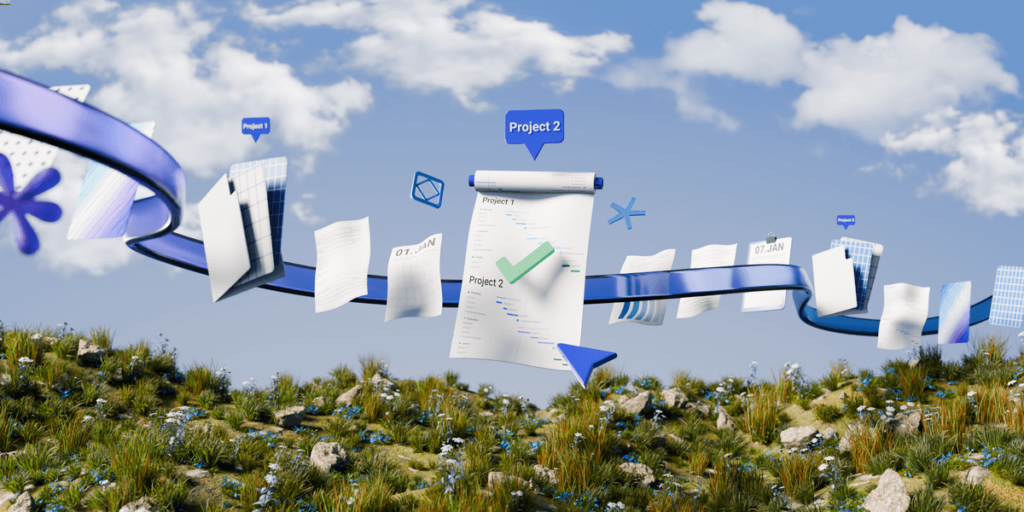
- Project milestones are checkpoints used to measure progress toward project goals and deliverables.
- Project phases are usually completed by accomplishing a milestone, but each phase can have multiple milestones.
- Project managers can use milestones to break down phases into more manageable segments.
- The best way to visualize project milestones is to use Gantt charts.
- Milestones are used in status reporting to provide stakeholders with more precise information on a project’s progress.
What are project milestones?
Project milestones are checkpoints or markers in the project timeline that measure the progress made toward the project’s end goals and deliverables.
Project managers use milestones to break down the project into more manageable segments. This makes it easier to track important project KPIs and allows for better reporting and communication with the project stakeholders.
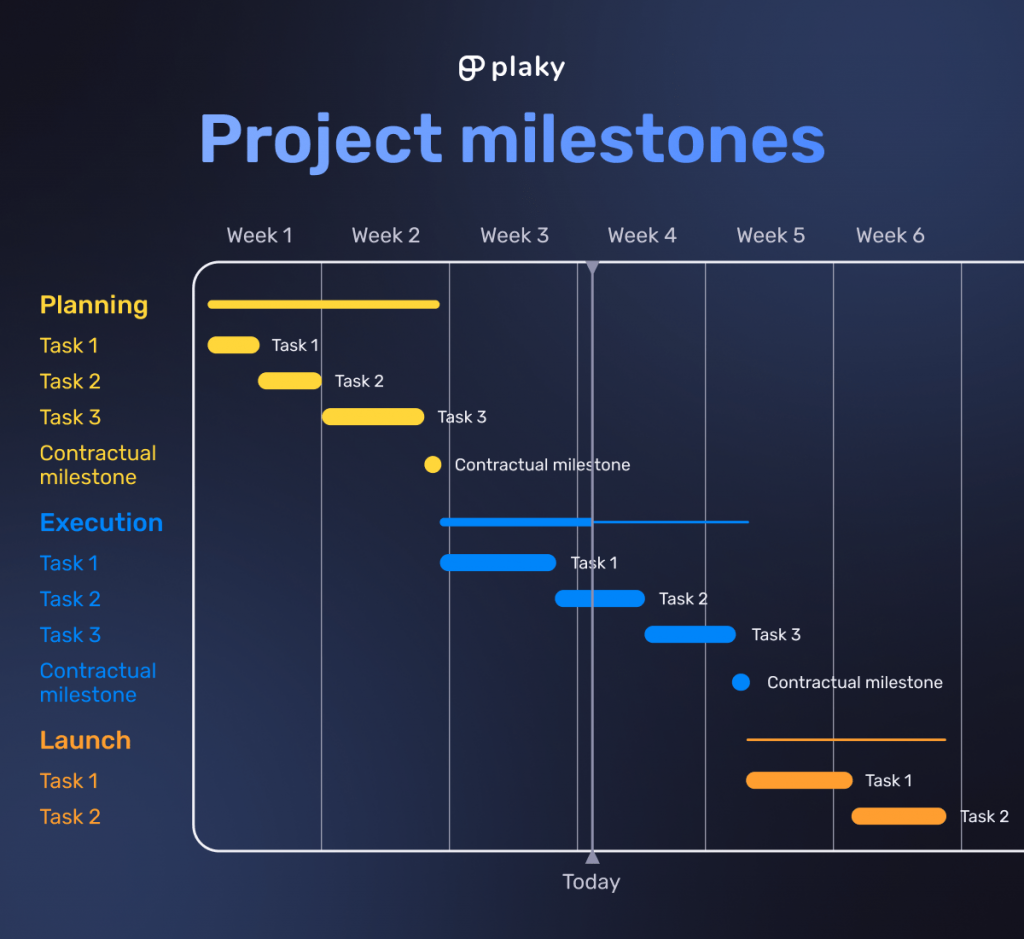
Milestones can be confused with other terms in project management. Here’s a quick overview of the most important differences between milestones and tasks, goals, and deliverables.
Milestones vs tasks
Tasks are single units of work with a start and end date assigned to one or more team members. To compare, milestones don’t have start or end dates as they’re points in time when managers assess whether the team has accomplished everything they planned to do with their tasks.
For example, a social media project may have a monthly milestone, e.g., an exact number of posts that must be published each month. In that case, each post can be a separate task that’s assigned to multiple team members and worked on for a set period.
Milestones vs goals
Goals are the project’s expected long-term outcomes — the final destination, so to speak — while milestones are project checkpoints that show whether minor goals have been achieved so far.
For example, a project’s main goal might be a new product launch. However, the milestones in that project would be different for the marketing team (e.g., creating a campaign and informing loyal customers) and the development team (e.g., delivering the new product and performing the necessary tests).
Either way, the purpose of these milestones is to check whether minor goals within those more extensive goals, such as pruning the newsletter list or designing new buttons, have been completed.
Milestones vs deliverables
Deliverables are outputs requested by stakeholders that the project team delivers throughout the project’s duration or at its end. Milestones, however, may define some deliverables as a necessary prerequisite for reaching a checkpoint successfully before moving on to the next phase.
For example, in an e-commerce company, a specific milestone would be offering the product on the platform by a certain date. The deliverables in this case would include retouched images in the required format, the product description, and similar elements.
Examples of milestones in project management
We can illustrate what milestones look like through 4 project phases:
- Initiation,
- Planning,
- Execution, and
- Closure.
Project initiation milestones
The project initiation phase involves defining the project’s concept and making initial agreements with stakeholders.
Some of the examples of milestones in this phase include:
- Determining the project’s goals and objectives,
- Assembling the team and assigning project roles,
- Setting a budget limit, and
- Defining the project’s time frame.
💡 Plaky Pro Tip
Hiring and retaining the right people is rarely as simple as it might seem. Learn more about HR project management and recruitment processes in these articles:
Project planning milestones
Once the project is loosely defined, it’s time to start planning out the details.
The milestones in the planning phase include:
- Defining the project scope,
- Creating a project timeline and agreeing on the result of each phase,
- Listing the cost of each activity and needed materials, and
- Writing a work breakdown structure and getting it approved by the stakeholders.
💡 Plaky Pro Tip
Would you like to learn more about how project managers handle project finances? Take a look at the following articles:
Project execution milestones
The execution phase is the core of the project — when all the work gets done. So, the milestones during the execution phase are more specific and differ greatly from industry to industry.
Here are some examples:
- Event planning — Get an RSVP from all the invited parties.
- Software development — Make the necessary changes to the rich text editor according to specifications.
- Construction — Secure heating in all parts of the house.
- Website design — Deliver the design mockup of all the requested pages.
Fulfilling some milestones in this phase can be a condition for moving on to the following phase of the project’s development, as many activities are connected and dependent on each other.
Project closure milestones
It’s not unusual for a project to have more than one deliverable. In such cases, successfully completing one or several deliverables is a good example of a significant project milestone and a sign that the project as a whole is on track and proceeding as planned.
For example, a construction firm working on a housing complex consisting of 4 buildings can treat the completion of each individual building as a deliverable.
Similarly, in the software industry, if a company is hired to develop several rather different apps, completing each app would be an important milestone.
How to set project milestones
Setting milestones is a necessary step in every project as getting them right can make a difference between project success and failure.
To properly set milestones for your project, you should:
- Determine goals, deliverables, phases, and tasks,
- Define each milestone clearly,
- Get milestones approved by stakeholders,
- Maintain communication with the project team, and
- Keep track of progress and remain flexible.
📖 Read about these and many more concepts in the Project Management Glossary of Terms, where you can find explanations for a wide range of project management terms.
#1 Determine project goals, deliverables, phases, and tasks
Make sure you collect all the requirements from the stakeholders during the initiation and planning phases. Once you have a clear understanding of the goals you need to achieve, you’ll be able to group similar project activities together.
This will enable you to define an outcome for each group of tasks and measure the project’s progress more easily.
We asked Jan Schiller, Partner and Chief Project Officer at Berkshire Consulting LLC, about creating milestones, and she emphasized several important factors to keep in mind:

“I determine what milestones to set based on the nature of the project outcome, the organization’s project governance checkpoints, stakeholder perspectives, and the key deliverables that must be achieved on schedule in order for the outcome to be accepted. Milestones make project schedule performance easier to accurately and predictably assess.”
#2 Define each milestone clearly
A well-defined milestone should include:
- The tasks that comprise it,
- The list of criteria that need to be met for its completion,
- The milestone’s description, and
- The final deadline.
If you’re wondering whether you’ve set a fitting milestone for your project, ask yourself:
- Is this event important?
- Does it represent tangible progress toward the project goals?
- Does it mark progress toward the completion of a phase or deliverable?
When deciding what milestones to track, it’s important to consider the project methodology you plan to use.
Milestones are especially important in projects that follow the traditional Waterfall project management approach, where the project can be divided into 5 distinct phases:
- Requirements,
- Design,
- Implementation,
- Verification, and
- Maintenance.
For Agile projects that don’t proceed in linear phases and value flexibility over fixed schedules, milestones might not be strictly defined from the beginning.
💡 Plaky Pro Tip
If you would like to learn more about different project management methodologies, take a look at the article below:
#3 Get milestones approved by stakeholders
When every milestone is clearly defined, it’s important to get the stakeholders’ approval.
No project manager wants to find out stakeholders had been expecting another result halfway through project development. That’s why the project planning phase gets so much attention.
This way, the stakeholders will know what to expect and look forward to — and you will know exactly what you need to deliver.
💡 Plaky Pro Tip
You can track and share project milestones by creating your own Gantt chart in Google Sheets or Excel. Here’s how:
#4 Maintain communication with the project team
Communication with the project team and stakeholders must be constant and transparent throughout the project’s development.
In fact, Jan Schiller considers communication the most important part of the process:

“The most important step when setting milestones is to ensure they are regularly and consistently included in project communication regarding schedule progress. I show my project timeline as a diagram that is first produced when the project plan is baselined and is updated to show actual complete dates (compared to planned target dates) for each project milestone at regularly scheduled project updates.”
We also talked to Noel Cabral, the Director at Main Sail, LLC, who pointed out why communication is so important when it comes to project milestones:

“Accountability is a prominent factor in project management. Without it, project milestones lose their value. Thus, one should focus on accountability while creating project milestones. Foremost, taking input from the whole project team is a must. After all, one of the objectives of creating project milestones is to motivate them to do their best.”
It’s also essential to keep everyone in the loop so that all team members have a good idea of the goal they’re working toward. This way, they can accurately make status reports on their progress and keep the project as a whole on track.
#5 Keep track of progress and remain flexible
Finally, remember that both external and internal factors can influence the course of the project, so all parties need to know if the original plans have been changed in any way.
Projects also tend to have dependent activities, so each team or individual should stay in the loop at all times.
Here’s what Jan Schiller had to say about keeping a close eye on your project throughout its development:

“Project managers should avoid not updating the project plan based on actual progress (don’t put that project plan on a shelf; don’t let it collect dust). Project managers manage; they do not track. Be prepared to proactively provide insights to stakeholders when milestone target dates are missed.”
With this in mind, if you wish to avoid significant setbacks, it’s important to continuously monitor progress and be ready to adapt to unpredictable situations as they arise.
If milestones are repeatedly late or cost more than anticipated, it could just mean they were not set adequately. However, it could also indicate an underlying issue with the current plan and schedule that needs to be addressed, such as overambitious deadlines or scope creep.
💡 Plaky Pro Tip
For additional insight into how to plan projects more efficiently, take a look at the following article:
Project milestone template
If you’d like to track milestones more accurately, here’s a customizable template you can try out.
Project milestones template — tracker with a timeline
In this template, you can:
- List all your milestones and their tasks,
- Set start and end dates,
- Track actual completion dates, and
- Track their status from several dropdown options.
You can select the fields listing the milestones and their start and end dates. Click “Insert” and choose the “Timeline” option. The sheet will then automatically create a new page with an easy-to-review timeline of all your milestones.
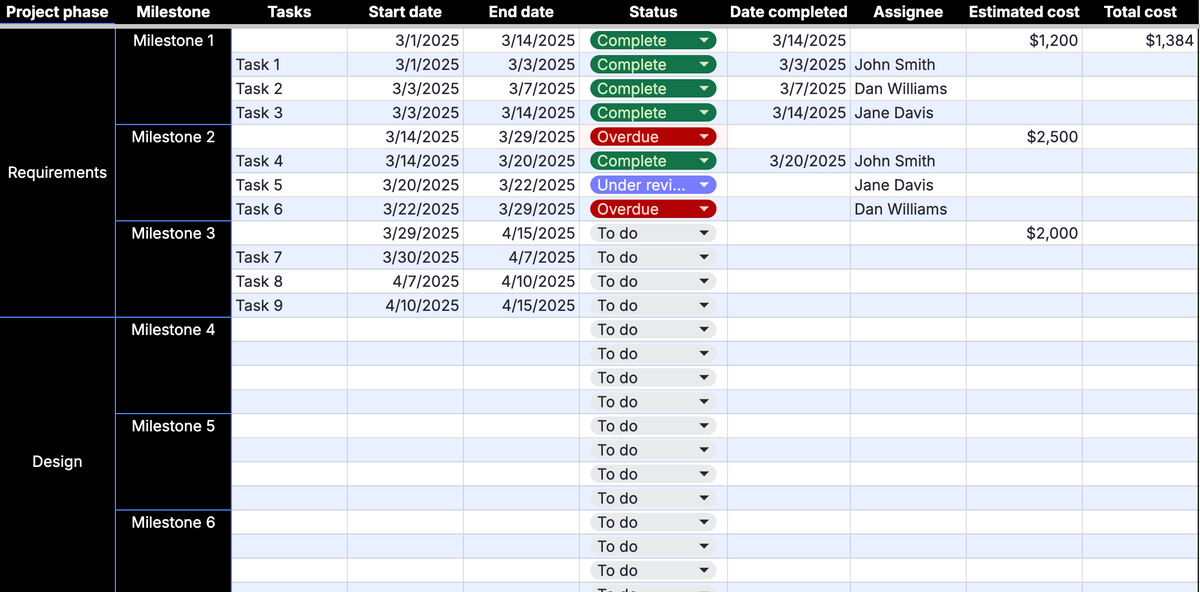
💡 Plaky Pro Tip
Here are some additional project timeline templates you might find useful:
Gain control over your projects with Plaky
Having an overview of your project’s tasks and milestones is a lot easier with a project management tool like Plaky. Not only can managers gain control, but the whole team can stay informed on the project’s progress!
For example, in Plaky, you can slice up your project board into groups and name them as milestones. Each group can contain items that need to be completed to achieve your milestone.
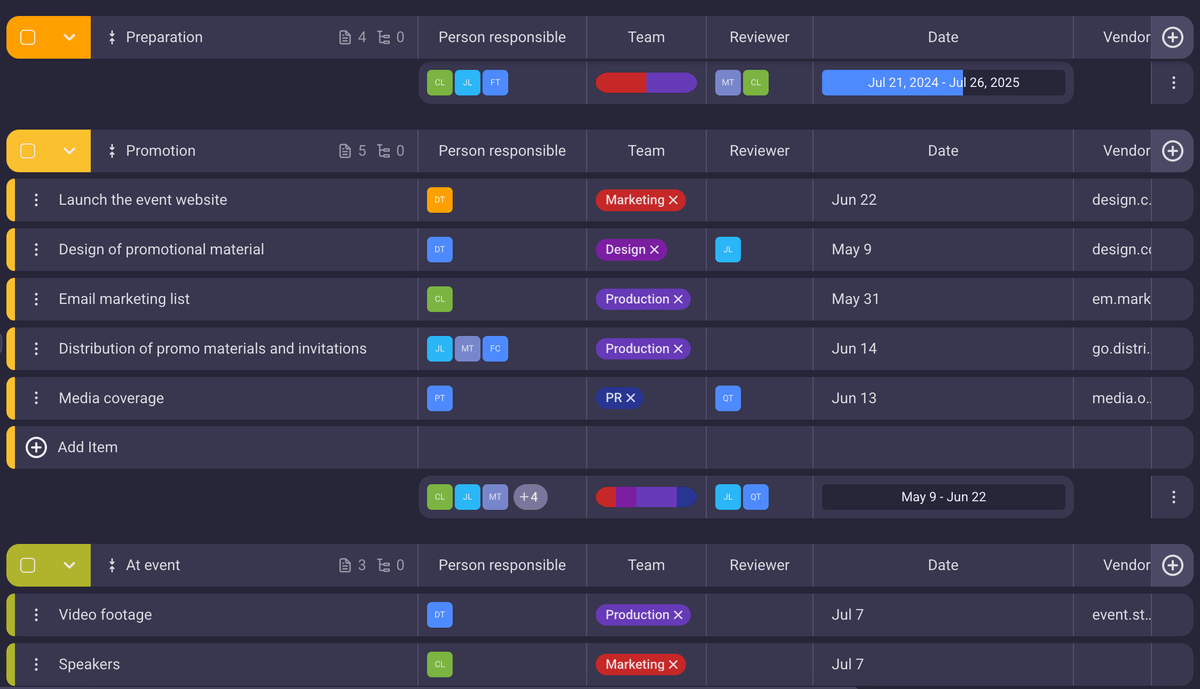
As the project unfolds, you’ll also need to keep in touch with the team. That’s where comments enter the scene, making it easier to communicate with everyone and stay in the loop. And you can even keep all information in one place by sharing files and never losing anything in your inbox again!
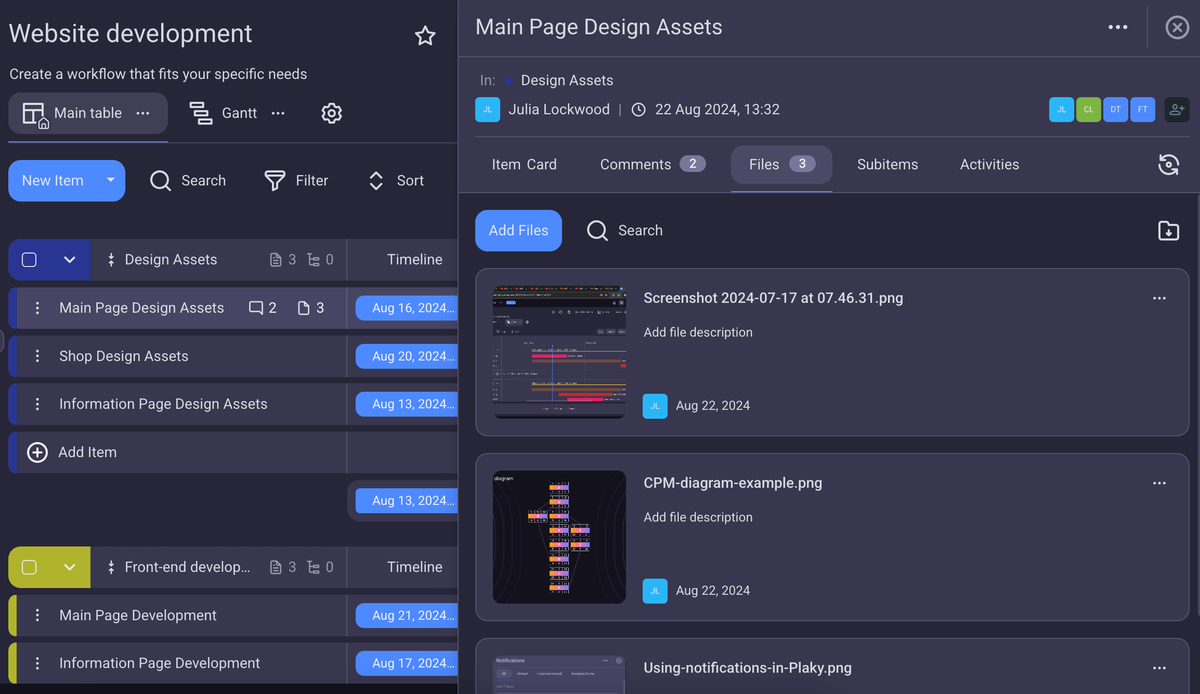
Ready to start tracking your project’s progress better? Give Plaky a spin with a free 14-day trial!
How we reviewed this post: Our writers & editors monitor the posts and update them when new information becomes available, to keep them fresh and relevant.